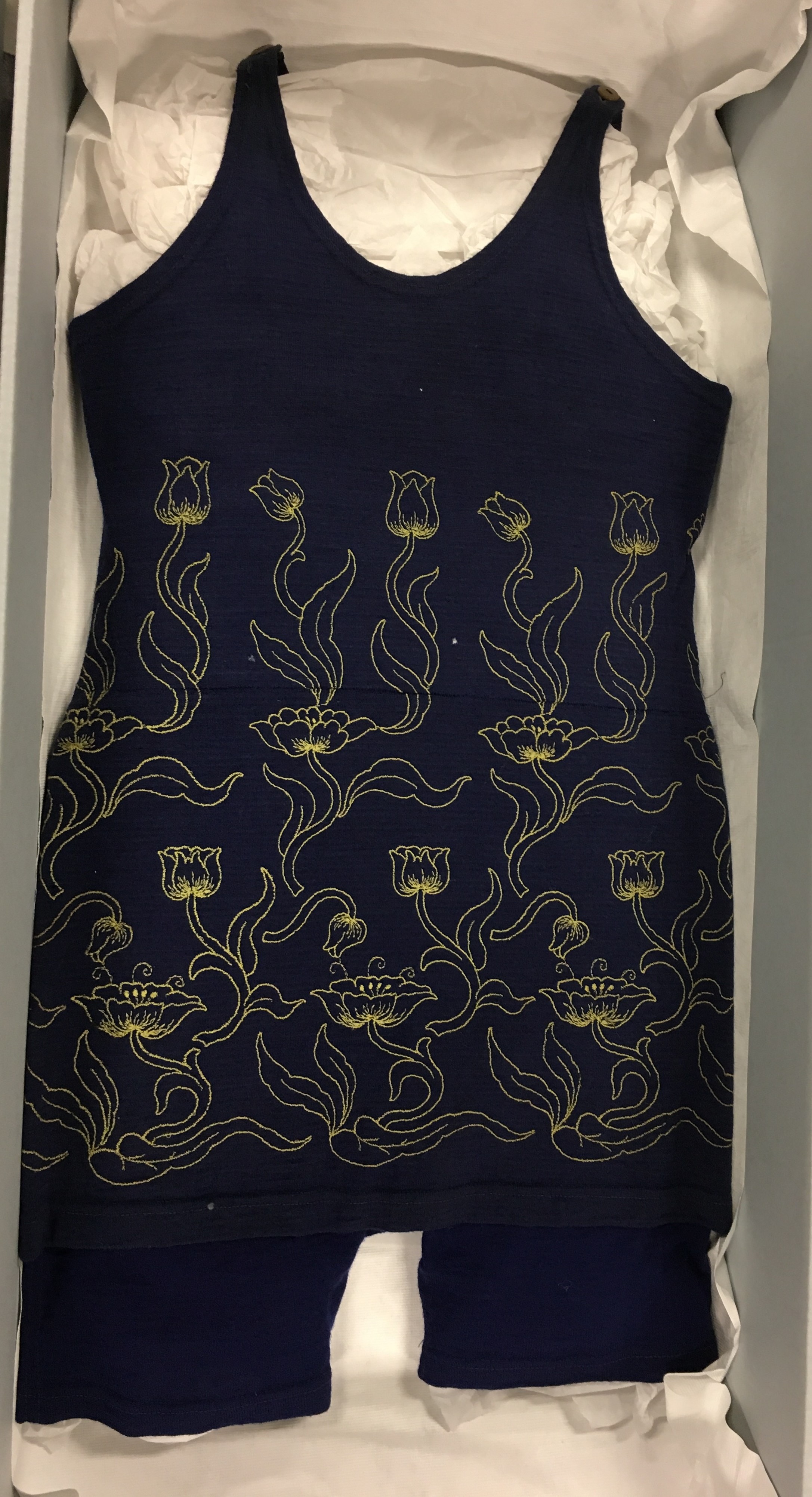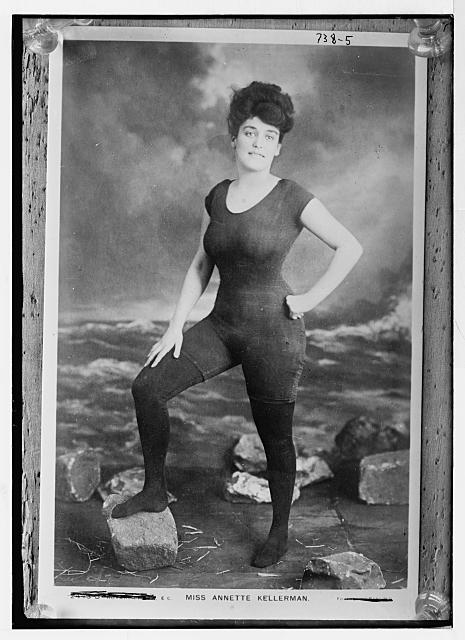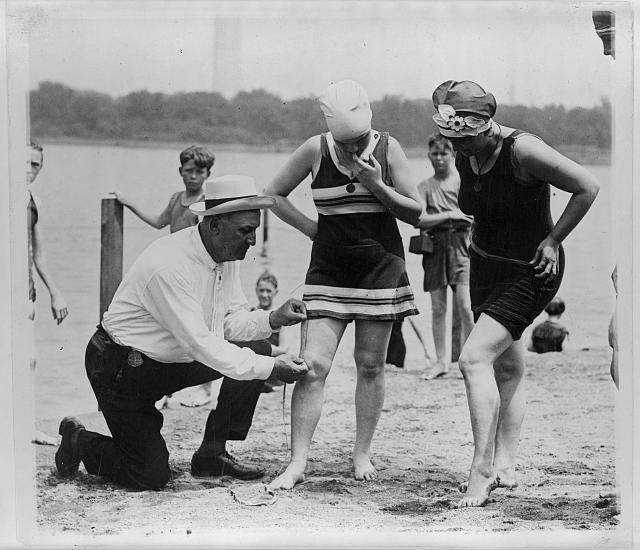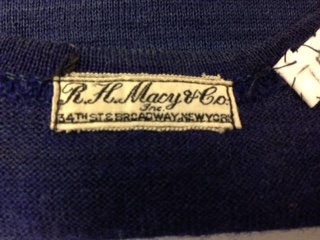Fun in the Sun During the Roaring Twenties
The 1920s is a time known for scandalous dressing, and swimwear was no exception. In honor of the last weekend of summer, today's post is dedicated to this lovely blue swimsuit from in the Fashion Archives here at the Maryland Historical Society.
 Navy Blue bathing suit with yellow embroidery, c. 1920s, 1975.36.1 Gift of Mr. J. Carroll Tulloss |
This wool bathing suit from the 1920’s may not look racy by today’s standards, but it may have raised more than a few eyebrows when it was originally worn. In the early twentieth century women were abandoning their bathing clothes for tight-fitting wools and knits, shocking more conservative beachgoers. One of the first women to break the mold was Australian Swimmer Annette Kellerman, who in 1908 after wearing a one-piece knit swimsuit into the Revere Beach near Boston was arrested for indecent exposure.
|
Miss Annette Kellerman, Bain News Service (publisher). The Bain Collection of the Library of Congress, ggbain 03569 |
During the twenties, women continued to don the more scant swimsuits at the beach. There were a few reasons for this, not the least of which was the prohibition era desire to cast off traditional rules and decency laws. Additionally, suntans became fashionable for the first time, so more exposed skin became desirable. The attraction of sunbathing also led to more elaborately designed suits as the beach became a place of fashion. Finally, there was functionality in the knit or wool suits; a woman could swim in the surf much better in the close-fitting swimwear than the bathing clothes of the 19th century.
 Detail of the wool swimsuit from the Fashion Archives showing the decorative yellow embroidery Detail of the wool swimsuit from the Fashion Archives showing the decorative yellow embroidery |
Despite the advantages, there was definite controversy with the form-fitting suits. Heads of beaches, private resorts, and country clubs instituted regulations on women’s swimwear, instituting fines or possible imprisonment for swimsuits that were too many inches above the knee, or in some cases when not wearing stockings. Some public venues even employed censors to walk and monitor sunbathers and enforce dress codes when needed.
|
Washington policeman Bill Norton measuring the distance between knee and suit at the Tidal Basin bathing beach after Col. Sherrill, Superintendent of Public Buildings and Grounds, issued an order that suits not be over six inches above the knee, 1922. Collection of the Library of Congress, cph 3b45864. |
Even with the public shaming some women faced and trepidation around the more exposed beach goer, the style was embraced by manufacturers and sold in many stores. The bathing suit from the Fashion Archives was purchased by Helen Carroll Grafflin Tulloss (1893-1959) at R. H. Macy and Co., what we now know as Macy’s department store.
|
Detail, manufacturer tag in navy swimsuit reads “R.H. Macy and Co. Inc. / 34th st. and Broadway New York.” 1975.36.1 Gift of Mr. J. Carroll Tulloss |
Of course bathing suits now are much more varied and can expose a lot more skin than in the 1920s. The beach censors would have their work cut out for them. So, the next time you are at a beach or swimming pool try to imagine wearing a wool one piece suit like those pictured above, coming no higher than six inches above your knee, and be thankful for contemporary swimwear!
You can now buy merchandise featuring details from this bathing suit in our museum gift shop! Check it out!
New Call-to-action
References:
Smithsonian Institution, Fashion: The Definitive History of Fashion and Style, 2012.
Drowne, K. and Huber, P., The 1920s. (2004)
Mendes, V. and De La Haye, Amy, 20th Century Fashion (1999)




